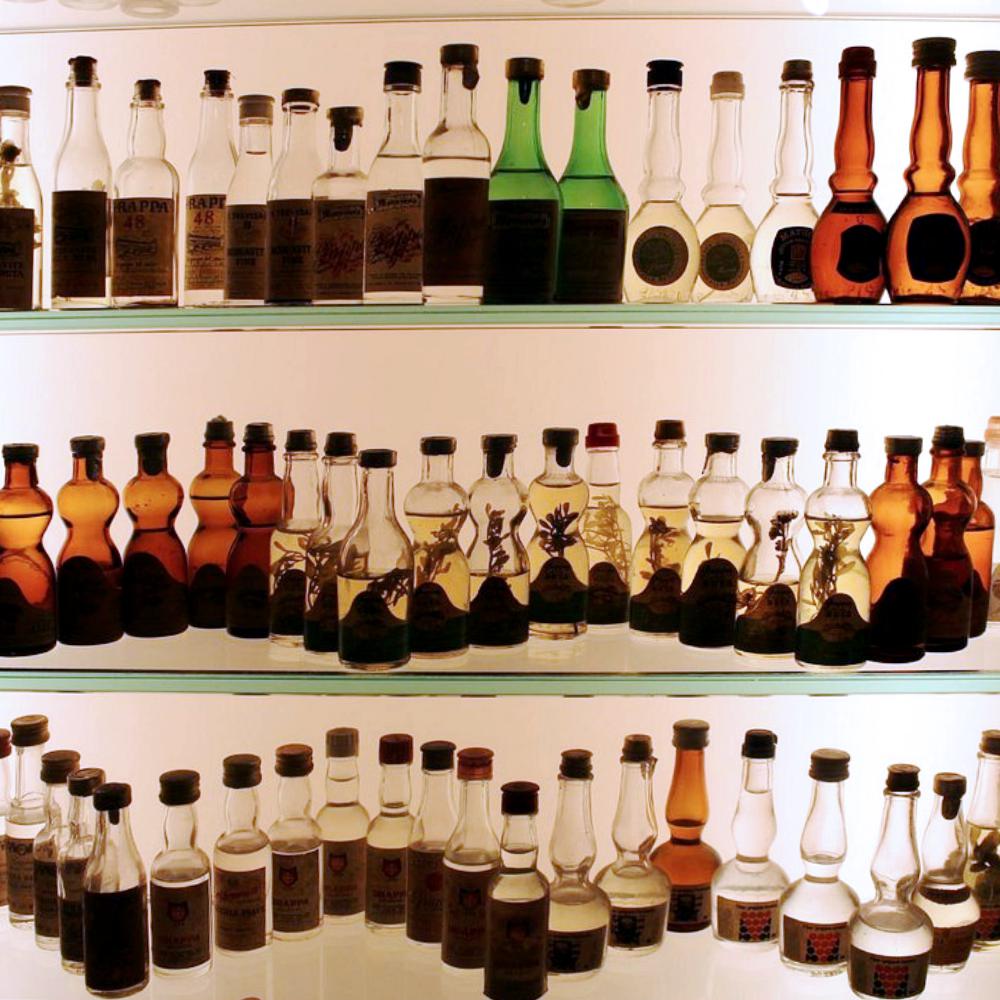Types of Grappa
Grappa is classified according to its age, the grape variety or varieties from which the pomace is derived, and, if applicable, the plant essences used for its aromatization.
We can classify Grappa in this way:
Young - remains in inert containers (steel or glass) after production until bottling;
Aromatic - produced from aromatic or semi-aromatic grapes, such as Moscato, Gewürztraminer, Malvasia, etc.;
Refined (Affinata) - bottled after being stored for less than 12 months in wooden containers;
Aged or Old (Invecchiata or Vecchia) - bottled after being stored for a period exceeding 12 months in wooden containers;
Very Old or Reserve (Stravecchia or Riserva) - bottled after being stored for a period exceeding 18 months in wooden containers;
Single-variety - obtained from pomace of a single grape variety, which is usually indicated on the label;
Multi-variety - produced with a blend of single grape varieties belonging to the same family but differing in clone, origin, ripening period, harvest time, and winemaking technique;
Flavored (Aromatizzata) - Grappa to which one or more natural plant essences have been added after distillation.
We can classify Grappa in this way:
Young - remains in inert containers (steel or glass) after production until bottling;
Aromatic - produced from aromatic or semi-aromatic grapes, such as Moscato, Gewürztraminer, Malvasia, etc.;
Refined (Affinata) - bottled after being stored for less than 12 months in wooden containers;
Aged or Old (Invecchiata or Vecchia) - bottled after being stored for a period exceeding 12 months in wooden containers;
Very Old or Reserve (Stravecchia or Riserva) - bottled after being stored for a period exceeding 18 months in wooden containers;
Single-variety - obtained from pomace of a single grape variety, which is usually indicated on the label;
Multi-variety - produced with a blend of single grape varieties belonging to the same family but differing in clone, origin, ripening period, harvest time, and winemaking technique;
Flavored (Aromatizzata) - Grappa to which one or more natural plant essences have been added after distillation.
"Grappe" and not "Grappa"
As can be inferred from this brief classification, the term Grappa encompasses many meanings. If we add the geographical origin of a particular type of pomace (for example, Grappa di Müller Thurgau from Trentino, Grappa di Cabernet and Merlot from Veneto, etc.), we get a broad and varied picture of Grappa.
This is why it is more correct to say that there are Grappas, with all their particularities and variants, and not only Grappa in general. Every Grappa production area has a centuries-old wealth of tradition and culture in distillation that makes each type of Grappa different from the others, giving enthusiasts and connoisseurs the opportunity of exploring the very large variety that the Italian distillate par excellence has to offer.



